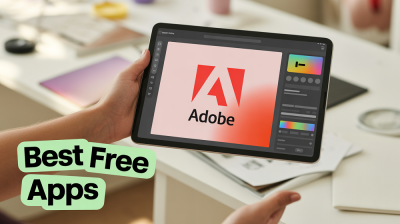Welcome to the exciting world of Alamy! If you’re a photographer or a content creator looking to monetize your work, understanding Alamy is crucial.
Alamy isn’t just about sales; it’s about connection. Contributors get to showcase their work to art buyers, marketing agencies, and individual creators who are in search of quality visuals. But what truly sets it apart is its contributor-friendly model, with generous commission structures and a commitment to fair representation. The platform accommodates all kinds of photography—from stunning landscapes to niche markets. Let’s dive deeper into what Alamy offers!
What Does Exclusive Mean on Alamy?

When you hear the term “exclusive” in the context of Alamy, you might wonder what it actually entails. Exclusivity can significantly affect your visibility, sales, and overall success as a contributor. So, let’s break it down!
*What is Exclusive Licensing?
Exclusive licensing on Alamy means that you agree to allow Alamy the sole rights to sell your work on their platform. Essentially, you won't be able to license your images through other stock sites or platforms while they are under this exclusive agreement. This might sound limiting, but it has some intriguing advantages.
Benefits of Exclusivity:
- Higher Commission Rates: Alamy often offers better commission rates for exclusive images compared to non-exclusive ones. This can lead to higher revenue for your work.
- Increased Visibility: Exclusive images often receive more promotional support from Alamy, meaning they may be featured more prominently in searches and collections.
- Trust and Credibility: Licensed exclusive images can attract buyers looking for unique content that they can't find anywhere else, enhancing your brand’s credibility.
Is Exclusivity Right for You?
This is a question every contributor should consider carefully. If you’re a photographer specializing in specific niches or if you have a catalog of images that are in high demand, going exclusive might be a smart move. However, if you have a diverse portfolio or rely on multiple platforms to sell your work, non-exclusivity might help maximize your reach.
The Control Factor:*
One thing to keep in mind when contemplating exclusivity is the control over your work. When you go exclusive with Alamy, you're locking certain rights, which can sometimes feel restricting. However, it’s important to weigh that against the potential benefits. Consider your goals as a contributor and how exclusivity aligns with achieving them.
In the end, the decision to go exclusive or not requires some self-reflection on your artistic goals, the nature of your work, and how you envision your brand's future in the stock photography marketplace. Alamy provides the tools; it’s up to you to decide how best to use them!
Also Read This: Alamy vs Adobe Stock: Comparing Two Prominent Stock Image Providers
3. The Benefits of Being an Exclusive Contributor on Alamy

Deciding whether to go exclusive on Alamy can feel like a big step for any contributor. However, the perks of exclusivity are certainly enticing! Here are some of the top reasons why many photographers and artists choose to take this route:
- Higher Royalties: Exclusive contributors on Alamy can earn higher commission rates compared to non-exclusive ones. While non-exclusive contributors might see commissions around 50%, exclusives can bump that to as much as 60% or more, depending on the sales.
- Marketing Support: Alamy often puts extra effort behind promoting exclusive contributors’ work. This can mean more visibility and better chances of sales as they showcase exclusive content in their marketing campaigns.
- Brand Recognition: By being exclusive, you align your work with Alamy’s trusted brand. The exclusivity can elevate your work’s status, making it more appealing to buyers who appreciate unique, high-quality images.
- Fewer Competitors: With fewer contributors offering the same images, your exclusive work stands a better chance of being the go-to choice for buyers searching for specific themes or subjects.
- Access to Resources: Exclusive contributors may access specialized resources, tools, and analytics on how their work is performing, getting insights to help refine their craft and boost sales.
In essence, being an exclusive contributor on Alamy can quite literally pay off. Not only do you earn higher royalties, but the additional support and recognition can lead to long-term relationships with buyers looking for that unique content.
Also Read This: How to Lock an Image in Word
4. Rights and Royalties: What Contributors Need to Know
When diving into the world of stock photography, understanding your rights and royalties is crucial. Here are some essential points every contributor should grasp:
- Understanding Licenses: Alamy operates on a licensing model where you retain ownership of your work. However, by uploading images, you grant Alamy a license to sell them. There are different types of licenses (such as royalty-free and rights-managed,) so ensure you know which one you’re opting for.
- Exclusive vs. Non-Exclusive Rights: As an exclusive contributor, you grant Alamy the right to sell your images only through their platform. This means other platforms can’t sell or distribute your work. In contrast, non-exclusive rights allow you to distribute your images through multiple channels.
- Royalties Structure: Alamy’s royalty structure is clear but nuanced. For exclusive contributors, earnings can increase with the number of sales. Understanding the tiered system can help you know what to expect monetarily.
- Sales Reporting: Keep an eye on your sales reports to track which of your images perform well. Alamy provides insights that can guide your future submissions and marketing strategies.
- Protecting Your Work: Always ensure you're uploading high-resolution images and using the correct keywords. This not only promotes visibility but also protects your work from being misused. Alamy has protocols in place to help protect your images from unauthorized use.
Ultimately, being aware of your rights and royalties on Alamy is indispensable in maximizing your success as a contributor. It empowers you to negotiate better deals, manage your portfolio effectively, and safeguard your creative assets.
Also Read This: Alamy vs Shutterstock Which Stock Photo Platform Is Better
5. Comparing Exclusive vs. Non-Exclusive Contributions
When it comes to contributing to stock photo platforms like Alamy, one of the biggest decisions you’ll face is whether to go exclusive or non-exclusive with your work. Each path comes with its own set of advantages and challenges, so let’s break it down.
Exclusive Contributions
- Higher Commission Rates: Exclusive contributors typically enjoy higher percentage returns on each sale. By restricting access to your work, you add value to your images, resulting in increased earnings.
- Brand Identity: Having a collection that’s exclusively yours can bolster your brand. You’ll create a sense of uniqueness, which may attract more clients who are looking for specific styles or subjects.
- Marketing Support: Exclusive contributors often receive more extensive marketing efforts from platforms like Alamy. This can mean better visibility for your images, leading to more sales.
- Dedicated Clientele: Clients looking for exclusive content are often willing to pay more. They might also establish ongoing relationships with exclusive contributors, leading to repeat business.
Non-Exclusive Contributions
- Wider Reach: One of the best perks of non-exclusive contributions is the freedom to sell your work on multiple platforms. This wide distribution can lead to more opportunities for sales.
- Flexibility: You can choose which images to keep exclusive and which ones to share across different platforms, giving you control over your portfolio.
- No Commitment: Non-exclusive arrangements generally require less commitment from you, allowing for more flexibility in how and where you market your work.
- Experimentation: You can experiment with different styles, subjects, and markets without being tied to one entity, giving you insight into where your work performs best.
While exclusive contributions provide potential for higher earnings and more robust support from the platform, non-exclusive contributions offer freedom and a broader sales network. It’s essential to weigh these factors based on your personal goals and business strategy.
Also Read This: A Quaint Midwestern Town Captured Perfectly on Alamy Stock Photos
6. How to Decide If Exclusivity is Right for You
Deciding whether to take the plunge into exclusivity can be daunting, but asking yourself a few key questions can help you navigate this decision.
What Are Your Goals?
Understanding what you want to achieve with your photography is vital. If you’re looking to build a brand and establish a strong identity within a niche, exclusivity could offer you that edge. On the other hand, if your priority is maximizing exposure and sales across multiple platforms, a non-exclusive route might be better.
How Much Time Do You Have?
Exclusive contributions often require more time and energy, especially since you may need to refine your offerings, ensure quality, and engage with clients regularly. Ask yourself: do you have the time to manage this commitment, or do you prefer their more flexible nature?
What Is Your Current Portfolio Like?
Consider the size and diversity of your portfolio. If you have a significant body of work that could appeal to exclusive clients (high-quality, unique images), exclusivity might work in your favor. Conversely, if you’re just starting out, non-exclusive contributions can help you gain experience and exposure.
How Does Each Option Align with Your Financial Needs?
If you rely on a steady income from your photography, calculate which model may offer more reliable financial returns in the short and long term. Exclusive contributions might lead to higher income per sale, but can you afford to go without multiple income streams during lean periods?
Are You Comfortable with Risk?
Every decision comes down to risk tolerance. Going exclusive can feel like putting all your eggs in one basket, while non-exclusivity spreads out your opportunities but may dilute your brand. Figure out how much risk you’re willing to take and base your decision on that assessment.
In the end, there’s no one-size-fits-all answer. It’s all about aligning your choices with your personal values, goals, and the realities of your business as a contributor. Take your time, weigh your options, and choose the path that resonates with you!
Also Read This: Uploading Model Releases on Alamy for Photographers
7. Tips for Success as an Alamy Contributor
Becoming a successful contributor on Alamy can be a rewarding journey, both creatively and financially. Here are some essential tips to help you make the most out of your contributions:
- Know Your Niche: Understanding the types of images that attract buyers in your chosen niche can set you apart. Focus on genres that resonate with your style, whether it’s travel, food, nature, or lifestyle photography.
- Quality Over Quantity: While it might be tempting to upload as many images as possible, prioritize quality. Each submission should be technically sound and visually compelling. This means high-resolution images, sharp focus, and proper lighting.
- Keyword Wisely: Keywords play a crucial role in how your images are discovered. Use relevant keywords that accurately describe your photo. Think like a buyer—what terms would someone use to find your image?
- Stay Updated on Trends: Pay attention to current trends in the market as they can change quickly. Keep an eye on popular themes, events, and seasonal needs. Adapting your content to include timely subjects can give you an edge.
- Engage with the Community: Join Alamy’s forums and social media groups. Engaging with other photographers can not only provide networking opportunities but also valuable insights into best practices and market needs.
- Be Consistent: Regularly upload new content. This not only keeps your portfolio fresh but also signals to buyers that you’re an active contributor. Develop a routine that allows you to explore new ideas and submit frequently.
- Utilize Metadata: Don't overlook the significance of metadata. Properly filling out image titles and descriptions can improve your visibility. Accurate metadata can define how your work is categorized and discovered by users.
Remember, success on Alamy doesn’t happen overnight. It requires dedication, patience, and a willingness to learn and adapt. Keep experimenting with different styles and techniques, and you’ll soon find your rhythm!
8. Conclusion: Navigating the Path to Successful Contributions on Alamy
Contributing to Alamy can open doors to incredible opportunities, but it’s essential to understand the landscape to navigate it effectively. Here’s a brief recap of what we covered and why it matters:
Knowing the ins and outs of exclusivity and rights ensures you’re not just safeguarding your work, but also maximizing your profitability. The platform’s flexibility allows you to choose the model that fits your goals, whether that’s exclusive rights for premium payouts or non-exclusive for a broader income stream.
As you embark on your journey as an Alamy contributor, consider these crucial aspects:
- Understand Your Rights: Familiarize yourself with the different rights associated with your images. Knowledge is power, and knowing how to protect your work will lead to better decision-making.
- Stay Informed: The stock photography industry is dynamic. Stay updated with Alamy’s policies and market trends to adjust your strategies accordingly.
- Connect with Others: Don’t hesitate to seek advice from fellow contributors. Learning from others’ experiences can provide insights that save you time and energy.
In conclusion, while the path to successful contributions on Alamy may come with its challenges, the potential for creative expression and financial gain is substantial. Embrace the process, keep refining your craft, and eventually, your unique vision will resonate with buyers. Here’s to your success as you share your work with the world through Alamy!
 admin
admin








